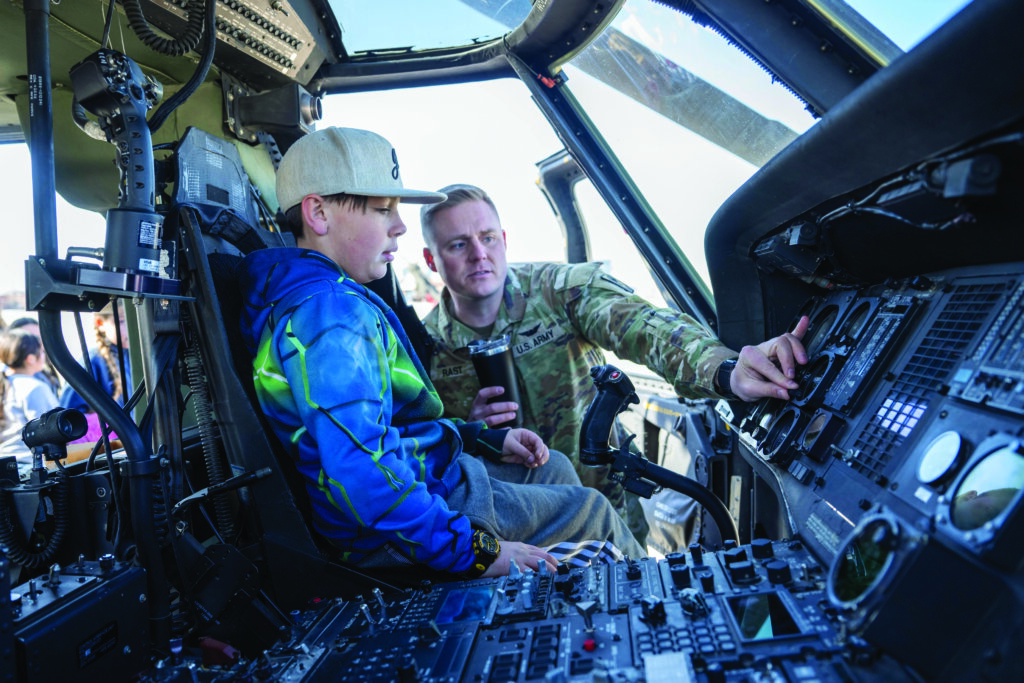Before STEM became the buzzword it is today, a teacher with connections at Selfridge Air National Guard Base near Detroit, Michigan, used those ties to help students see firsthand where learning about science, technology, engineering and mathematics could lead them.
The success of that program, Project STARS – or Science, Technology, Aerospace, Readiness School – caught the attention of a Michigan senator, who worked to expand it nationally as the Department of Defense’s STARBASE just two years later. In the three decades since, more than 1.5 million students have graduated from its programs.
Barbara Koscak, the elementary school teacher, teamed up with then-Brig. Gen. David Arendts, the 127th Fighter Wing commander. He then gave access to Selfridge; Lt. Col. Richard “Rico” Racosky, an F-16 pilot who developed a formula for achieving success that was incorporated into the program; and Rick Simms, a student at Wayne State University with a lifelong love of aviation, to create Project STARS in 1991.
Simms knew Koscak through the Civil Air Patrol, one of the program’s early partners. He had joined at 14 after years of watching planes take off from Selfridge’s airfield with his family, he said.
The four created curriculum for a five-day, non-residential summer program, funded by a grant from the W.K. Kellogg Foundation. The first year, parents registered their children individually. The goal was to get children, especially those from populations typically underrepresented in science fields, excited about what they were learning in school.
A military installation was a natural fit, the team decided.
After the first year, Sen. Carl Levin, who served on the Senate Armed Services Committee, told his colleagues about Project STARS.
“They find people who are excellent role models showing kids that someone cares about them, shares their excitement about learning about jet aircraft and computers and launching rockets,” he said in the Congressional Record for June 23, 1992. “It is an invaluable bridge across the gulf of hopelessness and disdain which is too prevalent in our cities. It is just a wonderful way to help youth trying to be their best.”
Levin collaborated with Georgia’s Sen. Sam Nunn on legislation to provide funding for an expansion to other installations, and President George H.W. Bush signed it into law in 1993. It now operates under the DOD’s Office of the Assistant Secretary of Defense for Manpower and Reserve Affairs, though there are academies at some active-duty installations.
The main focus is still fifth graders, through the five-day summertime class or a school year program in which students attend the program for five days over several weeks. Schools provide transportation and ensure each student has lunch, and STARBASE funds the rest. A program for older students launched last year, and has since served more than 2,200 middle school students at 47 locations, and nearly 300 high school students at 12 locations.
Pre- and post-program assessments show the lessons are sinking in. According to the 2022 annual report, students answered 16% more questions correctly on average. They also reported feeling more confident in their STEM skills, had greater awareness of STEM careers and interest in pursuing them.
While STARBASE isn’t a recruitment program, graduates do also report favorable opinions of installations as good places to work, and teachers are more likely to recommend military service.
Lt. Col. Bryan Amara, 127th Air Refueling Group’s director of maintenance, had a favorable opinion of Selfridge before his parents enrolled him in one of the early cycles of STARBASE. They both worked there, and he wanted to follow his stepdad’s footsteps to being a fighter pilot. Project STARS was an opportunity for him to enhance his math and science skills.
Amara did become a pilot. Since he is also assigned to Selfridge, he has gotten to see how the program evolved.
“It’s remarkable the difference between class two and class 30 years later,” he said.
He and his classmates got to build rockets and learn about hydroponic farming, since astronauts were using that technique to grow plants on the space station. Today’s students work with robotics, build a Mars rover model and get in a shuttle simulator. For his class, sitting in an F-15 simulator was cool – “But not as cool as the space shuttle.”

